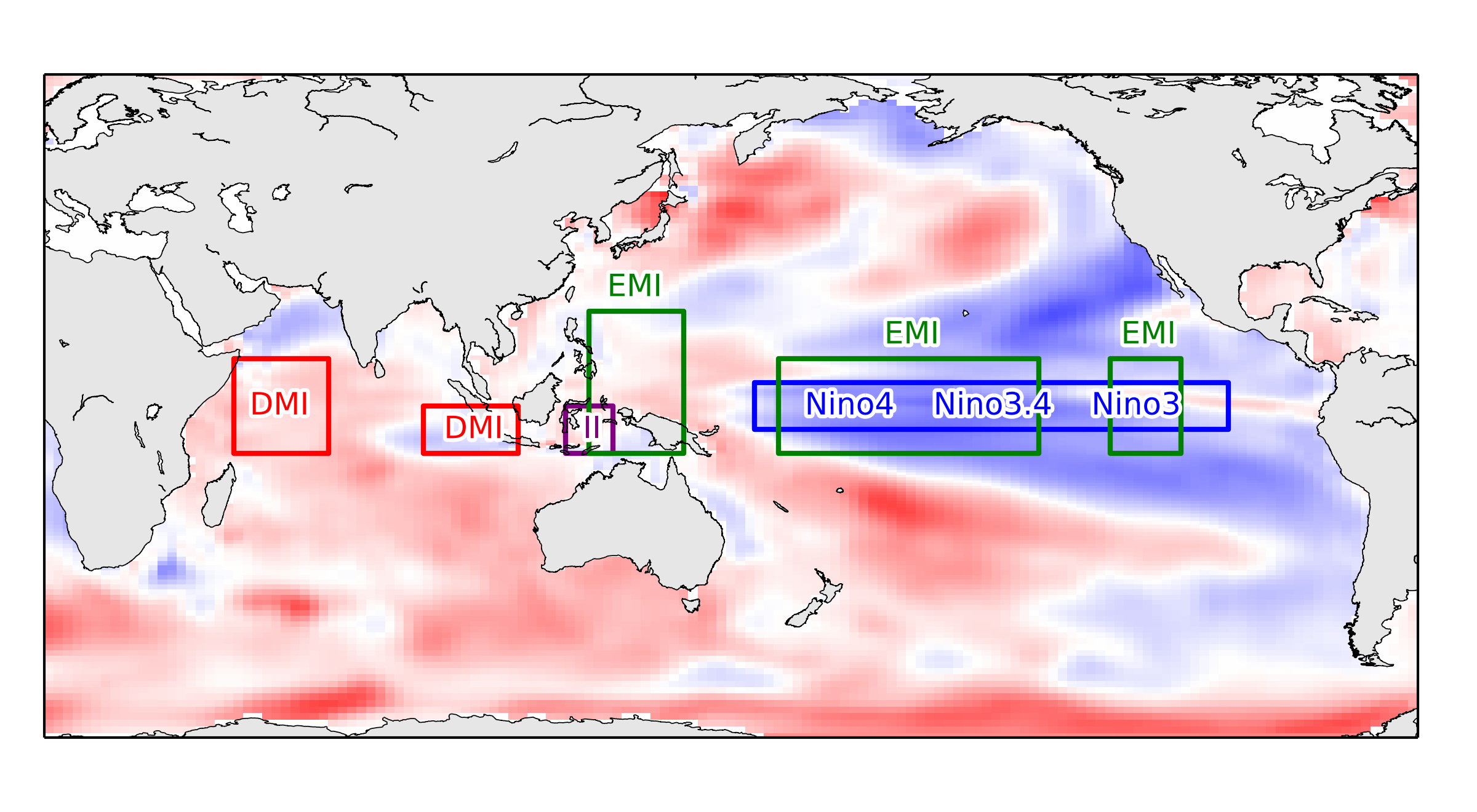Introducing CBaM for post-processing GCM seasonal climate forecasts
Contributed by QJ Wang, Andrew Schepen and David Robertson
The CBaM (calibration, bridging and merging) method aims to make the best use of General circulation model (GCM) outputs to produce the most skillful and reliable forecasts for operational applications.
Calibration is to overcome the problem that raw GCM forecasts are generally biased and unreliable in ensemble spread. In CBaM, Calibration models are established using a Bayesian joint probability (BJP) approach (presented here: Wang and Robertson 2011; Wang et al. 2009) to statistically calibrate raw GCM forecasts and to produce forecasts that are unbiased and fully reliable in ensemble spread.
Raw (and therefore calibrated) GCM forecasts of climate variables are generally low in skill. Nevertheless, GCM forecasts of large scale climate circulation patterns can be skillful for lead times of many months. Since large scale climate circulation patterns are known to impact regional climate, skillful GCM forecasts of large-scale climate indices can be exploited to augment the skill of forecasts of climate variables. To this end, multiple BJP bridging models are used to statistically produce climate forecasts, using climate indices calculated from GCM forecasts of SST (Sea Surface Temperature) as predictors.
Climate indices used as predictors in bridging models for forecasting Australian seasonal precipitation. The climate indices are calculated from GCM forecasts of sea surface temperature in regions enclosed by boxes.
Forecasts from calibration and bridging models are then merged using a Bayesian model averaging (BMA) approach (Wang et al. 2012). The merging is to take advantage of the different strengths of the models for different location and seasons, to maximise forecast skill.
When forecasts from multiple GCMs are available, the CBaM method is applied to post-process outputs from each of the GCMs. The post-processed forecasts from all the GCMs are then merged using the BMA method. The merging here is to take advantage of the different strengths of the GCM models.
The effectiveness of the CBaM method has been demonstrated in a number of applications for precipitation forecasting:
- The benefit of bridging is demonstrated clearly through post-processing (POAMA; Predictive ocean atmosphere model for Australia) outputs for Australian monthly and seasonal forecasting (Hawthorne et al. 2013; Schepen et al. 2014) and post-processing ECMWF System 4 outputs for seasonal forecasting across China (Peng et al. 2014).
- Merging post-processed forecasts from multiple GCMs (Schepen and Wang 2013) and forecasts from statistical models (Schepen et al. 2012) also brings benefit.
- The CBaM method has also been demonstrated to work well as a downscaling tool and for multiple and long lead times (Hawthorne et al. 2013; Schepen and Wang 2014).
The CBaM method is always able to produce forecasts that are almost perfectly reliable in ensemble spread. When GCMs have no underlying skill for certain location and season, the forecasts from the CBaM method will converge to climatology.
While publications on the CBaM method have been on precipitation, work has been done and is ongoing for temperature and other climate variables.
See here for the list of references.

0 comments